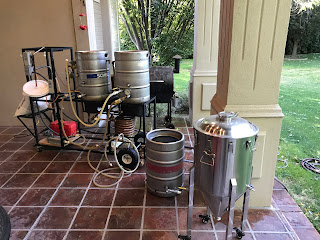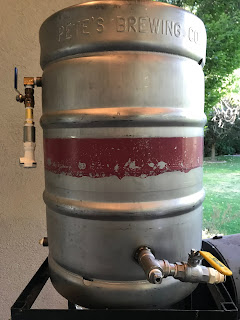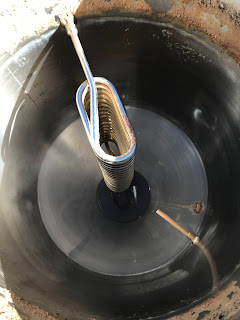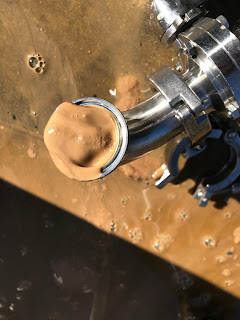
It was LONG over due time for me to replenish my long gone favorite house beer, my beloved Dark IPA. I was quite frustrated with myself for letting it go so long, especially since I had been working from home all summer due to some crazy disease or something. It was not rational or reasonable that I had let things get so far out of control. And, so, with a couple weeks off to bleed down my extensive time off before retiring, I resolved to have a brew day!
I was so eager, that I did something I had not done in years. Setup and run PBW cleaner on my brew frame the day before with water carefully left in to start heating early the next morning. Yup! I was going to rock this.
That should have been my first warning. There was a giant wind storm later that night and a heavy layer of dust and leaves lay all over my brewery equipment and the area around. I had to dump all the water and wash down things before getting started. But, my spirits were still high. The last couple brews had resulted in stuck mashes. Primarily (I was convinced) due to my MT domed false bottom being pressed down and "flipping" inverted. I had started putting a 3/4" copper elbow fitting under it after laboruosly pulling all the grains out and resetting it. Well, this time, I had that licked. I was putting the fitting in there to begin with! ...and so, I started the HLT kettle temps going to 145'F and some water in the BK for the initial dough in water.
All started well, and I had a great flow going through my HERM's. Dough in at about 135'F (drops a bit when adding grains to about 125'F) but HLT was at 140'F and building, so start my step. That's when I notice flows slowing. I kept an eye on it, but yup...there it was...dropping more. I had removed my sight glass and plugged the holes, because I could see pressure and even liquid flowing around the mash through the sight glass as vacuum started with the lower port very close to the false bottom and I wanted to stop that from being able to happen. Well, that might not have been the best, since I was sticking (again) and now, there was no flow / by-pass to help get the temps higher. Research has shown that most stuck mashes happen when temps fall below 145'F. So lengthy spells at 135-140'F (or worse, exposing liquid in the HLT coils to 150'F temps and then dumping back in to drop below 140'F) can tend to gum things up. This is still fundamental to the grind, I'm convinced, and I had begun lazily using the LHBS grain mill rather than my own.
I desperately drained what I could off and bailed liquid from the top of the mash, and infused some 165'F fresh water, trying desperately to get it up to temp. I put in a small pvc tube down to the false bottom with inlet just below the surface trying desperately to get some liquid able to recirculate into the HLT coils (now at almost 170'F just desperately trying to get temps up). I was doing a 16 gallon brew, so I was going to need top up anyway, and could easily put it back in to the top of the mash at sparge out. I finally got a paltry flow and temps were finally up to 150'F after almost 2 hours struggling with it. I was already beat.
Managed to finish out the mash and boils went uneventful, though I was short on gravity and efficiency by about 5-10%, and made it up in volume. Hoping things turn out well.
Characteristics
- Style: 10C American Brown
- OG: 1.047
- FG: 1.013
- ABV: 4.5%
- SRM: 22'L
- IBU: 49
Ingrediants
- 25 lbs 2-row
- 1.75 lbs Chocolate
- 1.75 lbs Crystal 80L
- 2 oz Galena pellet @ 60 min
- 2 oz Cascade pellet @ 30 min
- 2 oz Tettnanger pellet @ 10 min
- 1 oz Simco leaf @ 5 min
- Wyeast 1318 London Ale III











No comments:
Post a Comment